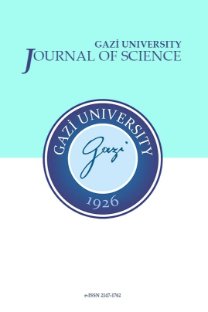Prediction of Breast Cancer through Tolerance-based Intuitionistic Fuzzy-rough Set Feature Selection and Artificial Neural Network
Fuzzy-Rough set, Intuitionistic Feature- selection, Breast cancer,
___
- [1] Agarwal, R., “https://towardsdatascience.com/the-5-feature-selection-algorithms-every-data-scientist-need -to-know-3a6b566efd2”, Access date: 27.07.2019.
- [2] Jensen, R., Shen, Q., “Fuzzy-Rough Sets Assisted Attribute Selection”, IEEE Transactions On Fuzzy Systems, Feb; 15(1): 73, (2007).
- [3] Jensen, R., Shen, Q., “Fuzzy-Rough Attribute Reduction with Application to Web Categorization”, Fuzzy Sets and Systems, 141(3): 469-485, (2004).
- [4] Jensen, R., Shen, Q., “Computational intelligence and feature selection”, rough and fuzzy approaches, Hoboken, New Jersey, John Wiley & Sons, 8: (2008).
- [5] Pawlak, Z., “Rough sets”, International Journal of Parallel Programming, 11(5): 341–356, (1982).
- [6] Pawlak, Z., “Rough sets, theoretical aspects of reasoning about data”, Dordrecht, Netherlands: Springer Science, Business Media, 9: (2007).
- [7] Pawlak, Z., Skowron, A., “Rough sets: Some extensions. Information Sciences” 177(1): 28–40, (2012).
- [8] Slowinski, R., Vanderpooten, D., "Similarity Relation as a Basis for Rough Approximations", Advances in Machine Intelligence and Soft Computing, P. Wang, ed., Duke Univ. Press, (IV): 17-33, (1997).
- [9] Han, Jiawei, Lee, J.G., Kamber, M., "An overview of clustering methods in geographic data analysis", Geographic Data Mining and Knowledge Discovery 2, 149-170, (2009).
- [10] Tan, K.P., Liu, H.G., Liang, P.H., Bioorganic and Medicinal Chemistry Letters, 20(12): 3569-3572, (2010).
- [11] Dubois, D., Prade, H., "Putting Rough Sets and Fuzzy Sets Together", Intelligent Decision Support, 203-232, (1992).
- [12] Dubois, D., Prade, H., Farreny, H., Martin, R., Clouaire, Testemale, C., “Possibility Theory An Approach to Computerized Processing of Uncertainty”, Plenum Press, New York, (1988).
- [13] Dubois, D., Prade, H., “Twofold fuzzy sets and rough sets-Some issues in knowledge representation”, Fuzzy Sets & Systems, 23: p3-ndash, 18, (1987).
- [14] Atanassov, K. T., “Intuitionistic fuzzy sets”, In Intuitionistic fuzzy sets, Physica, Heidelberg, 1-137, (1999).
- [15] Bustince, H., Burillo, P., “Vague sets are intuitionistic fuzzy sets”, Fuzzy Sets and Systems, 79 (3): 403-405, (1996).
- [16] Elena, E., Castiñeira, Torres-Blanc, C., Cubillo, S., “Measuring contradiction on A-IFS defined in finite universes”, Knowledge-Based Systems, 24 (8): 1297-1309, (2011).
- [17] Deschrijver, G., Etienne E., Kerre, “On the position of intuitionistic fuzzy set theory in the framework of theories modelling imprecision”, Information Sciences, 177 (8): 1860-1866, (2017).
- [18] Dymova, L., Sevastjanov, P., “An interpretation of intuitionistic fuzzy sets in terms of evidence theory: Decision making aspect”, Knowledge-Based Systems, 23 (8): 772-782, (2010).
- [19] Mukherjee, S., Basu, K., “Solution of a class of Intuitionistic Fuzzy Assignment Problem by using similarity measures”, Knowledge-Based Systems, 27: 170-179, (2012).
- [20] Feng, Q., Li, R., “Discernibility Matrix Based Attribute Reduction in Intuitionistic Fuzzy Decision Systems”, Paper presented at the RSFDGrC, (2013).
- [21] Tiwari, A.K., Shreevastava, Sh., Som, T., Shukla, K.K., “Tolerance-based intuitionistic fuzzy-rough set approach for attribute reduction”, Expert Syst, 101(C July): 205–212, (2018).
- [22] Skowron, A., Stepaniuk, J., "Tolerance Approximation Spaces", Fundamenta Informaticae, 27 (2): 245-253, (1996).
- [23] Jurio, A., Paternain, D., Bustince, H., Guerra, C., Beliakov, G., “A construction method of Atanassov's intuitionistic fuzzy sets for image processing”, IEEE International Conference Intelligent Systems, London, 337-342, (2010).
- Yayın Aralığı: 4
- Başlangıç: 1988
- Yayıncı: Gazi Üniversitesi, Fen Bilimleri Enstitüsü
Naiyer Mohammadi LANBARAN, Ercan ÇELİK
Faraz EGE, Oğuz TURGUT, Emre A. ELİBOL
Hayri DUMAN, Mehmet Erkan UZUNHİSARCIKLI, Funda ÖZBEK
Fatma ÜNAL, Funda DEMİRTAŞ KORKMAZ, Zekiye SULUDERE, Özlem EROL, Deniz YÜZBAŞIOĞLU
Kübra TURAN, Muharrem AKCAN, Orhan Murat KALFA
Mehmet DAS, Ebru K. AKPINAR, Sinan AKPINAR
Süleyman ERTEN, Meltem KOŞAN, Furkan İŞGEN, Esra DEMİRCİ, Mustafa AKTAŞ
